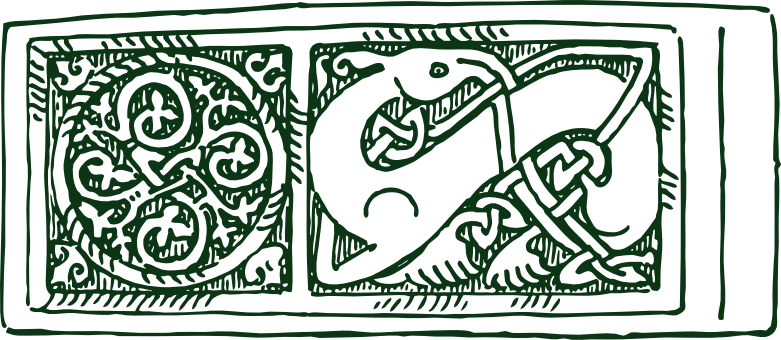L.R. Griffen, D. Skilling and R.T. Smith
with J.G. Young
The 2015 Dumfriesshire Rookery Census: Including comparisons with the surveys of 1908, 1921, 1963, 1973, 1975, 1993, 2003, 2004, 2008 and 2010
Ornithology, Biology
TDGNHAS Series III, 89 (2015), 9(4.65 MB)
Abstract
A total of 13,135 rook nests in 350 rookeries were counted in the 43 parishes of Dumfriesshire in April and May 2015. Although this represents a decrease of 20 rookeries compared to the number recorded in 2010, nest numbers increased by 785 in that period. The average number of nests per rookery increased to 38; something that has not been recorded during either the period of rook population growth from 1921 to 1993 or the period of population decline from 1993 to 2010. For the first time, no rookeries of more than 200 nests were recorded in 2015, the maximum count being 187 nests (cf. 217 in 2010). The number of rookeries containing over 100 nests increased from 20 to 24 from 2010 to 2015 — the first time an increase in this rookery size class has been recorded since 1993. Although it is of concern that the distribution of breeding colonies has again declined, the apparent increase in the breeding population and the cessation of the historic decline is perhaps a cause for optimism regarding the fortunes of the rook in this county.
|
A. Dalton
Preliminary Survey of the Macrophyte Flora of Loch Skeen, Dumfriesshire
Quaternary geology, Biology, Botany
TDGNHAS Series III, 79 (2005), 21(4.05 MB)
Abstract
Loch Skeen (or Skene, NT 171 165) is a moraine dammed loch lying in a NNW/SSE direction in an upland corrie basin. It lies within Grey Mare’s Tail SSSI, owned by the National Trust for Scotland. A description of the site is given by Mackinlay (2003). The
|
J.G. Young
The Rook in Dumfriesshire: A 2004 profile
Meteorology, Biology, Botany, Zoology, Ornithology, Entomology, Agriculture
TDGNHAS Series III, 79 (2005), 1(4.05 MB)
Abstract
Rooks have nested in Dumfriesshire since time immemorial and their numbers have been surveyed since at least 1908. During the decade (1993-2003) they decreased dramatically by 30% and by a further 5% between 2003 and 2004. The climate and topography are c
|
N. Chisholm
The River Annan District Salmon Fishery Board River Management
Proceedings, Biology, Zoology
TDGNHAS Series III, 78 (2004), 156(4.91 MB)
Abstract
Summary of a lecture delivered to the Society on 19th March 2004 by Nick Chisholm, Environmental Manager to the River Annan District Salmon Fishery Board. The River Annan is unaffected by hydro-electric power schemes, unlike so many Highland rivers, and i
|
S. Tanner
Forestry and Ecology
Biology, Zoology, Ornithology, Proceedings, Botany, Entomology
TDGNHAS Series III, 78 (2004), 155(4.91 MB)
Abstract
Summary of a lecture delivered to the Society on 6th February 2004 by Stan Tanner, Planning and Environment Forester, Forest Enterprise. Forestry Enterprise manage the Forestry Commission estate to create attractive productive woodland and manage them fo
|
E.J. Perkins
The Ecology of Scar Grounds in the Solway Firth
Biology
TDGNHAS Series III, 61 (1986), 4(WARNING very large file size: 22.66 MB)
|
E.J. Perkins
Some Aspects of the Biology of Pagurus Bernhardus (L.)
Biology
TDGNHAS Series III, 59 (1984), 21(WARNING very large file size: 35.85 MB)
|
T.R. Burnett
Conversazione in the Unionist Rooms [Summary only]
Geology, Bronze Age, Biology, Roman and Romano British
TDGNHAS Series III, 25 (1946-47), 172(WARNING very large file size: 36.46 MB)
|
C. Tierney
Some More Secrets of Nature [Summary only]
Biology
TDGNHAS Series III, 25 (1946-47), 166(WARNING very large file size: 36.46 MB)
|
R. Elmhurst
The Seashore
Biology
TDGNHAS Series III, 21 (1936-38), 323(WARNING very large file size: 68.9 MB)
Abstract
Mr Elmhurst gave a most interesting address on the various creatures that may be met with on an ordinary stretch of Scittish west coast seaboard, showing the difference in marine life on sandy, rocky, and other types of shore, and added a short account of
|
J. Taylor
Genetics:The Science of Heredity [Summary only]
Biology
TDGNHAS Series III, 20 (1935-36), 35(WARNING very large file size: 60.71 MB)
Abstract
The lecturer described the discoveries of Mendel and some of his experiments in detail, and then explained briefly the principles of cell structure and the transmission of certain characteristics, e.g., sex.
The lecture was fully illustrated by diagrams
|
|
|
T.B. Grierson
The Study of Nature and its Advantages [Mention only]
Botany, Zoology, Biology
TDGNHAS Series II, 3 (1880-83), 45(4.79 MB)
|
T.B. Grierson
The Extinction of Species [Mention only]
Biology
TDGNHAS Series I, 6 (1867-68), 8(2.65 MB)
|
J. Shaw
On the Growth of the Taste for Beauty in Objects of Natural History [Summary only]
Botany, Zoology, Anthropology, Biology, Miscellaneous
TDGNHAS Series I, 4 (1865-66), 7(WARNING large file size: 6.18 MB)
|
